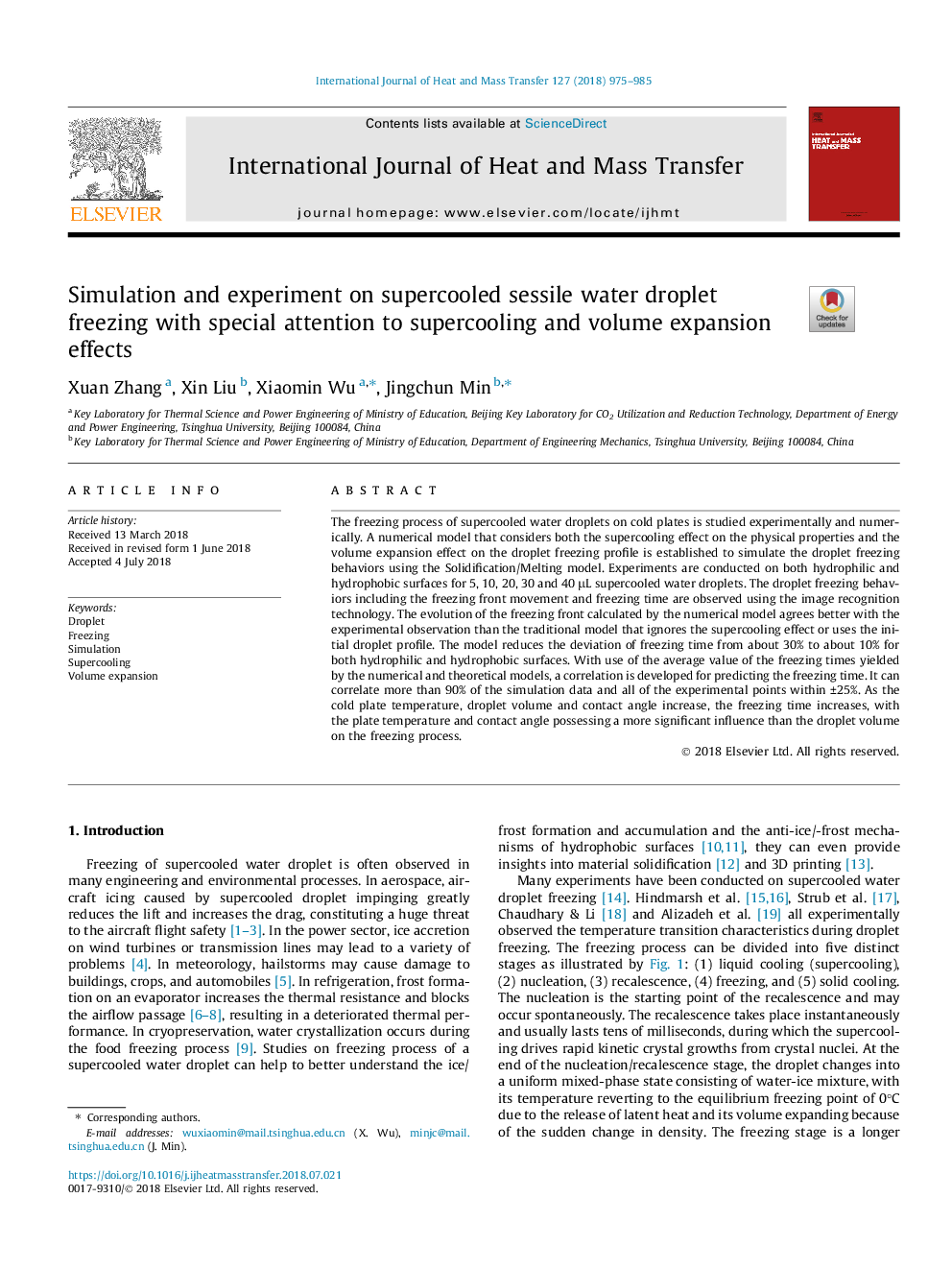| Article ID | Journal | Published Year | Pages | File Type |
|---|---|---|---|---|
| 7053834 | International Journal of Heat and Mass Transfer | 2018 | 11 Pages |
Abstract
The freezing process of supercooled water droplets on cold plates is studied experimentally and numerically. A numerical model that considers both the supercooling effect on the physical properties and the volume expansion effect on the droplet freezing profile is established to simulate the droplet freezing behaviors using the Solidification/Melting model. Experiments are conducted on both hydrophilic and hydrophobic surfaces for 5, 10, 20, 30 and 40 μL supercooled water droplets. The droplet freezing behaviors including the freezing front movement and freezing time are observed using the image recognition technology. The evolution of the freezing front calculated by the numerical model agrees better with the experimental observation than the traditional model that ignores the supercooling effect or uses the initial droplet profile. The model reduces the deviation of freezing time from about 30% to about 10% for both hydrophilic and hydrophobic surfaces. With use of the average value of the freezing times yielded by the numerical and theoretical models, a correlation is developed for predicting the freezing time. It can correlate more than 90% of the simulation data and all of the experimental points within ±25%. As the cold plate temperature, droplet volume and contact angle increase, the freezing time increases, with the plate temperature and contact angle possessing a more significant influence than the droplet volume on the freezing process.
Related Topics
Physical Sciences and Engineering
Chemical Engineering
Fluid Flow and Transfer Processes
Authors
Xuan Zhang, Xin Liu, Xiaomin Wu, Jingchun Min,
